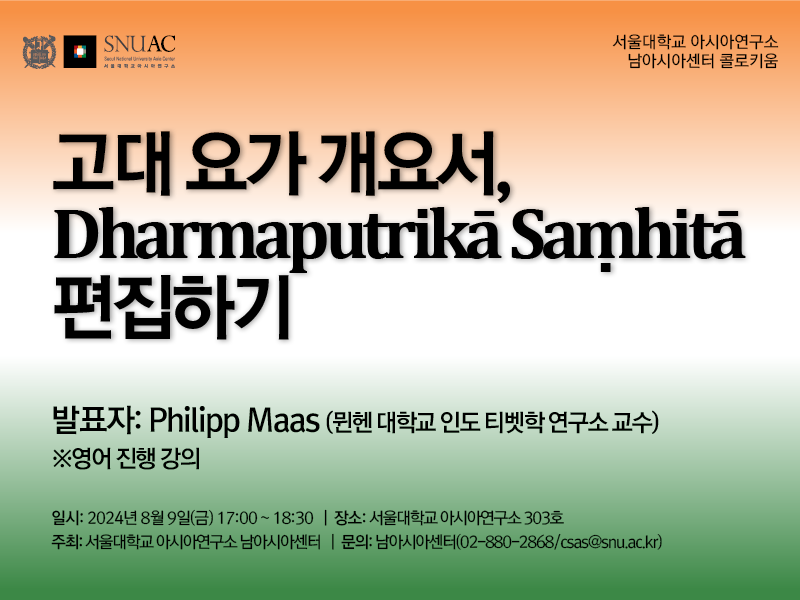Editing the Dharmaputrikā Saṃhitā, an Ancient Yoga Compendium
- Date: August 9th, Friday, 2024, 17:00 – 18:30
- Location: Room 303, SNUAC (Bldg. 101)
Presenter: Philipp Maas (Professor, Ludwig-
“The Compendium of Dharmaputra” (Dharmaputrikā Saṃhitā) is a metrical composition on yoga that was possibly composed as early as the sixth or seventh century CE by an author who referred to himself as “the son of Dharmaśīla.” This yoga work, which declares itself to be a summary of the yoga teaching first promulgated by Sanaka (one of the mythic sons of the god Brahmā) for the instruction of novices, provides a systematic account of a method to obtain either supernatural powers, possession of a corpse to attain a new body after death, or spiritual liberation. Despite the extraordinary relevance of this work for research in the early history of yoga and religion in pre-modern South Asia, the Dharmaputrikā Saṃhitā received virtually no scholarly attention until the publication of Christèle Barois’s seminal research article “The Dharmaputrikā Saṃhitā: Preliminary Notes on an Early Text on Yoga” in the Journal of Yoga Studies in 2020. In her almost book-length publication, Barois convincingly argues for an early date of this yoga compendium and a religious milieu of origin that was only marginally connected with Śaivism. Over the last couple of years, Christèle and I have worked jointly on a critical edition of the Dharmaputrikā Saṃhitā based on the twenty available manuscript sources and the printed edition by Yogin Naraharinātha (Kathmandu 1998). Our editorial work has considerably refined our knowledge of Dharmaputra’s works, especially concerning its original language of composition, its transmission history, and the usage of Buddhist terminology in the first to chapter topical sections “on yogic means” (sādhanaparakaraṇa) and “on postures” (āsanaparakaraṇa). In this presentation, I will introduce the yoga of the Dharmaputrikā Saṃhitā, its intended audiences and the methodology for reconstructing the text version of this fascinating work that resembles the original composition as closely as possible.

